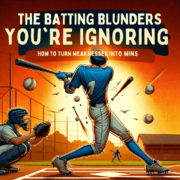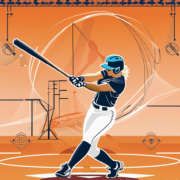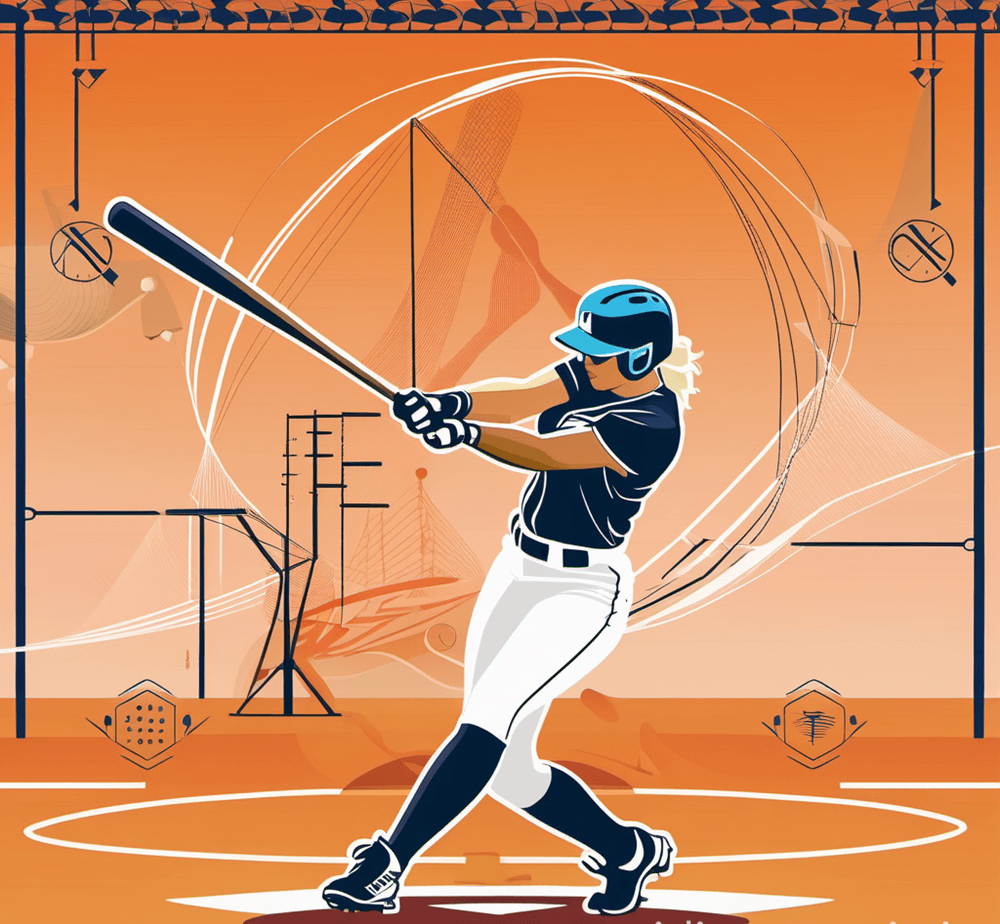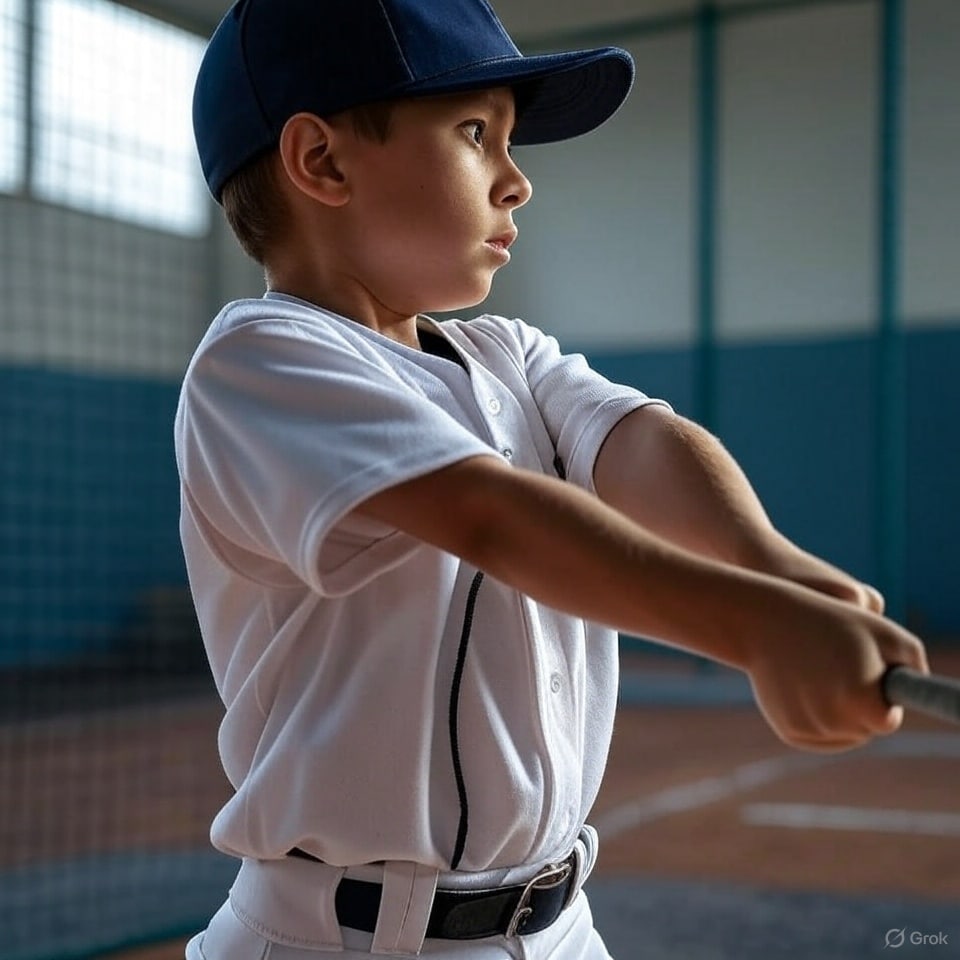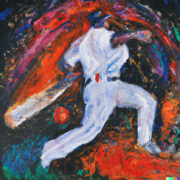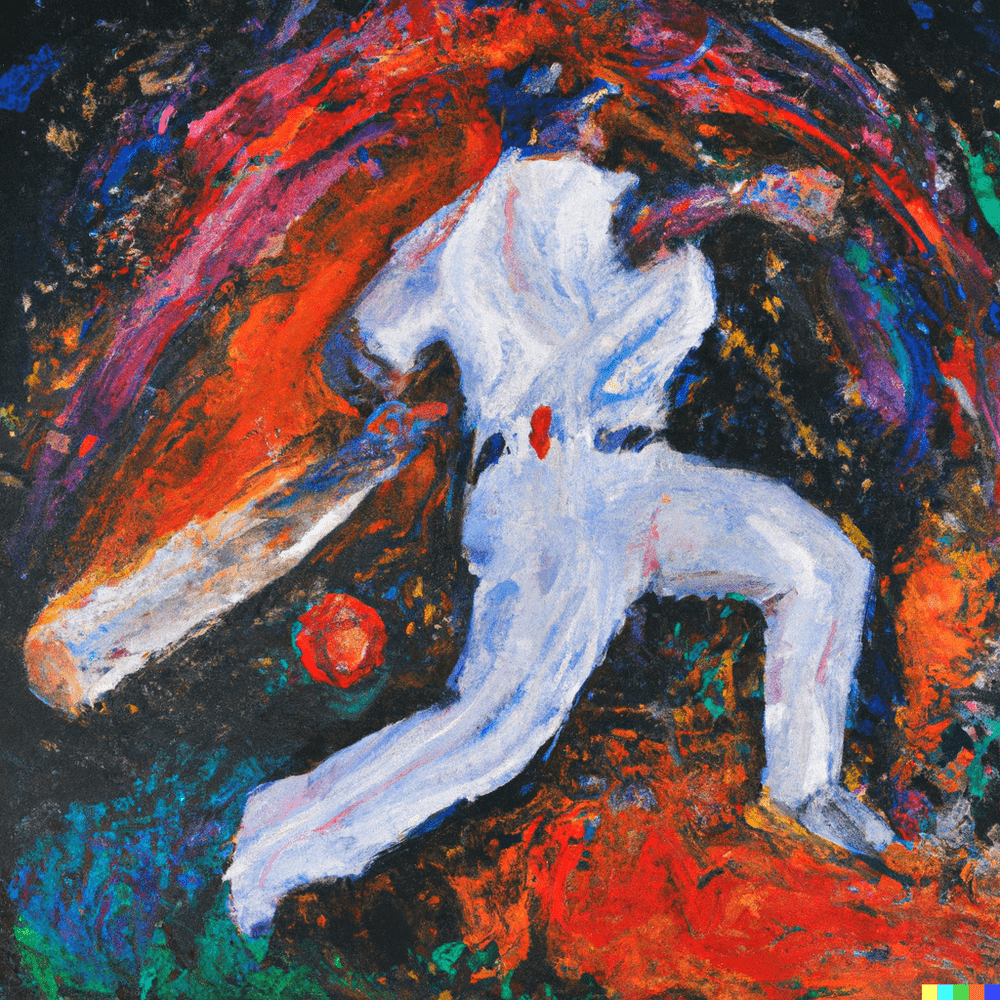The Batting Blunders You’re Ignoring: How to Turn Weaknesses into Wins!

Hey there, fellow baseball and softball enthusiasts! Today, we’re diving into a topic close to every hitter’s heart: the top 5 mistakes made in the batter’s box during games. Whether you’re a seasoned player or just starting, understanding and correcting these errors can significantly elevate your performance at the plate. Let’s knock this out of the park!
Mistake 1: Stepping in the Bucket
Ever heard of “stepping in the bucket”? It’s a common mistake where hitters step away from home plate during their swing. This little misstep can lead to a whole world of trouble, like missing pitches on the outside part of the plate. This is a glaring hole in the swing that a pitcher can exploit.
Mistake 2: Pulling the Head
Pulling the head is another big no-no. Imagine trying to hit a moving object while looking somewhere else – sounds crazy, right? That’s exactly what happens when you pull your head out. You lose sight of the ball, making solid contact about as likely as finding a snowball in the desert. This leaves hitters vulnerable to pitches middle away.
Mistake 3: Dropping Hands
Now, let’s talk about dropping hands. It’s like letting the steering wheel slip in a high-speed chase. You lose control and power, making your swing slower and less effective. Picture trying to chop just the right spot on a tree trunk, to cut it down, with your hands dropping – not the best strategy, is it? This leaves hitters vulnerable to pitches up in the zone.
Mistake 4: Barrel Dropping or Looping
Barrel dropping or looping is a bit like trying to draw a straight line with a shaky hand. The barrel of the bat drops below the desired swing plane, leading to undercuts or pop-ups. You want a smooth, direct path to the ball, not a rollercoaster ride! This also leaves hitters vulnerable to pitches up in the zone.
Mistake 5: Flattening of the Bat at Stride Landing
Finally, the flattening of the bat at stride landing. This mistake alters the angle of your bat, making it parallel to the ground too early. It’s akin to swinging a golf club at a baseball – the timing and mechanics just don’t match up. This can cause a hitter to also step in the bucket to make room to reach the inside pitch, not very effective.
The Science Behind These Mistakes
Understanding the biomechanics and physics of hitting is crucial. Each mistake we’ve discussed alters the ideal swing mechanics, impacting everything from bat speed to the point of contact. It’s like a finely-tuned engine running with a few loose bolts – the performance just isn’t optimal.
Biomechanics of Stepping in the Bucket
When you step in the bucket, your body’s alignment goes haywire. It’s like throwing a punch while stepping away from the intended target – the power just isn’t focused in the right direction. This misalignment also limits your ability to cover the entire strike zone effectively.
Physics of Pulling the Head
Pulling the head out disrupts your visual tracking of the ball. Imagine trying to catch a fast-moving train while looking at the tracks behind you. Not only does it affect your focus, but it also throws off your timing and spatial awareness.
Dropping Hands and Swing Mechanics
Dropping your hands lowers the bat’s starting position, forcing you to make a longer, upward swing to the ball. It’s akin to pulling an arrow back halfway and pointed up on a bow – the shot lacks power and precision.
Barrel Dropping: A Path Issue
Looping the barrel creates an inefficient bat path. Think of it as taking a detour on a straight road. This roundabout path to the ball often leads to mistimed swings and weak contact.
Flattening the Bat and Timing
Flattening the bat too early disrupts the synchronization between your body’s rotation and the bat’s movement. It’s like trying to jump on a moving carousel – timing is everything, and getting it wrong can throw off your entire swing.
Strategies to Correct Stepping in the Bucket
To fix this, focus on drills that reinforce stepping directly toward the pitcher. Practice with a visual aid, like a line drawn in the dirt, to ensure your stride is going straight. It’s like learning to walk a tightrope – precision is key. Here’s our favorite drill for correcting Stepping in the Bucket:
Solutions for Pulling the Head
Keep your eyes locked slightly out front of contact. Use drills that encourage head stability, such as placing a cap or glove under your chin during swings. It’s like keeping your eye on the prize but SLIGHTLY out front. Swing across your face, not around it. Here’s our favorite drill for this.
Overcoming Dropping Hands
Implement drills that promote a high hand start and a short path to the ball. Think of it like a boxer keeping their guard up – ready and efficient. Here’s our favorite drill for this.
Correcting Flattening of the Bat
To fix the premature flattening of the bat at stride landing, you can try the “Flashlight Barrel Angle Drill”, you keep the knob of the bat “shining” behind the back foot. It’s like guiding a plane on a smooth landing path – you want it direct and controlled. Here’s our favorite drill for this.
Fixing Barrel Dropping or Looping
Correcting barrel dropping or looping is all about creating a more efficient bat path. You can use the overload (heavy bat) and underload (light bat) training principle. Here’s a chat I had with Perry Husband on the power of this training principle about helping a hitter control the barrel better. In addition, here are my favorites weighted bats.
Integrating Corrections into Practice
The key to integrating these corrections into your practice is consistency and mindfulness. Treat each swing in practice with the same focus and intention as you would in a game. It’s like rehearsing for a big show – the performance is only as good as the practice. Keep swing rounds short, 3-6 swings per round.
Advanced Tips for Consistent Improvement
For ongoing skill enhancement, incorporate video analysis into your training routine. Record your swings and analyze them, or better yet, get feedback from a coach. It’s like having a mirror that shows not just your reflection but also your shadows. Think about going wide versus going deep. Frequency or more important than how long you practice, before developing the habit of practice. Get at least four days of practice, and at least 5-mins per session. You can do more, but at least get the minimum.
Conclusion
Remember, correcting these mistakes takes time and patience. It’s a journey, not a sprint. Think of it as sculpting a masterpiece – it takes numerous chisels and refinements to reveal the beauty underneath. Keep practicing, stay focused, and you’ll see significant improvements in your game day at-bats. Correcting the top 5 mistakes will patch up any significant holes in the swing, making it difficult for a pitcher to find anything to clearly exploit.
FAQs
- How long does it take to correct these hitting mistakes? Like any skill, it varies. Consistent practice and focus can lead to noticeable improvements within a few weeks. Think of it as planting a garden – with daily care, you’ll soon see growth. Water the plant!
- Can these corrections be applied to both baseball and softball? Absolutely! The fundamentals of a good swing are universal in baseball and softball. It’s like cooking – the basic ingredients are the same, but you might tweak the recipe a bit.
- Are there specific drills for each mistake? Yes, there are numerous drills tailored to each specific issue – check the links and watch the video above. It’s like having a toolkit – you select the right tool for the job at hand.
- Should I focus on one correction at a time? Ideally, yes. Tackling one issue at a time allows for focused improvement. It’s like solving a puzzle – piece by piece, the picture becomes clearer.
- How do I know if I’m making progress? Regular video analysis, feedback from coaches, and self-awareness during practice are great indicators. It’s like tracking your progress on a map – you can see how far you’ve come and where you need to go.

